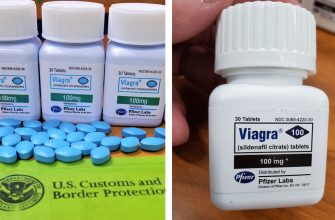Need a clear understanding of sulfamethoxazole-trimethoprim tablets? This guide provides concise, actionable information. We’ll cover key aspects, focusing on practical application and avoiding unnecessary jargon.
This medication, often abbreviated as SMX-TMP, is a powerful combination antibiotic targeting a broad spectrum of bacteria. It’s frequently prescribed for urinary tract infections (UTIs), bronchitis, and certain types of ear infections. Remember, always follow your doctor’s instructions precisely.
Dosage typically varies depending on the infection’s severity and your individual health. Common adult dosages range from one to two tablets twice daily. Never adjust your dosage without consulting a healthcare professional. Children’s dosages are significantly lower and must be carefully determined by a physician based on weight and age.
Potential side effects include nausea, vomiting, diarrhea, and allergic reactions (ranging from mild skin rashes to serious anaphylaxis). Seek immediate medical attention if you experience severe allergic reactions or other concerning symptoms. Inform your doctor about any existing medical conditions or medications you’re currently taking before commencing treatment.
Drug interactions are possible. Certain medications can impact SMX-TMP’s effectiveness or increase the risk of adverse reactions. Open communication with your doctor or pharmacist is crucial to ensure safe and effective treatment. This detailed information will help you understand this common antibiotic better.
- Sulfamethoxazole-Trimethoprim Tablets: A Detailed Guide
- Understanding the Medication
- Potential Side Effects
- Interactions and Precautions
- Storage and Disposal
- When to Seek Medical Attention
- Alternative Treatments
- Understanding the Mechanism of Action
- Trimethoprim’s Role
- Clinical Significance
- Common Uses and Indications for Prescription
- Specific Infections Treated
- Important Considerations
- Dosage and Administration Guidelines
- Potential Side Effects and Precautions
- Drug Interactions and Contraindications
- Storage and Disposal Recommendations
- Proper Storage Practices
- Safe Disposal Methods
- Step-by-Step Disposal Guide
Sulfamethoxazole-Trimethoprim Tablets: A Detailed Guide
Always follow your doctor’s instructions precisely. Dosage depends on the infection’s severity and your individual health. Typical adult dosages range from one to two tablets twice daily, but variations exist.
Understanding the Medication
This combination antibiotic fights bacterial infections effectively. Sulfamethoxazole interferes with bacterial folic acid production, while trimethoprim blocks a crucial enzyme in the same pathway, creating a powerful synergistic effect. This dual action enhances the medication’s ability to target and eliminate bacteria.
Potential Side Effects
Common side effects include nausea, vomiting, diarrhea, and rash. Less frequent, but more serious, side effects may include allergic reactions (such as Stevens-Johnson syndrome), blood disorders, and kidney problems. Report any unusual symptoms immediately to your physician.
Interactions and Precautions
Certain medications, such as warfarin and methotrexate, can interact negatively with sulfamethoxazole-trimethoprim. Individuals with kidney or liver disease, folate deficiency, or a history of allergic reactions to sulfa drugs should discuss potential risks with their doctor before using this medication. Pregnancy and breastfeeding should also be discussed with a healthcare professional to assess potential impact on the mother and child. Adequate hydration is crucial during treatment to minimize kidney strain.
Storage and Disposal
Store tablets in a cool, dry place, away from direct sunlight and moisture. Follow local guidelines for proper disposal of unused medication.
When to Seek Medical Attention
Contact your doctor if your symptoms worsen, persist beyond the prescribed treatment period, or new symptoms develop. Severe allergic reactions require immediate medical attention.
Alternative Treatments
Your doctor may consider alternative antibiotics if this medication proves ineffective or causes intolerable side effects. The choice of antibiotic depends on the specific bacteria causing the infection and your individual circumstances.
Understanding the Mechanism of Action
Sulfamethoxazole and trimethoprim work synergistically to inhibit bacterial folic acid synthesis, a crucial step in bacterial growth and replication. Sulfamethoxazole blocks dihydropteroate synthase, preventing the conversion of para-aminobenzoic acid (PABA) to dihydrofolic acid. This is a competitive inhibition, meaning sulfamethoxazole directly competes with PABA for the enzyme’s active site.
Trimethoprim’s Role
Trimethoprim inhibits dihydrofolate reductase, the next enzyme in the folic acid synthesis pathway. This enzyme converts dihydrofolic acid to tetrahydrofolic acid, another vital component for bacterial DNA synthesis. The combined effect of blocking both steps significantly reduces bacterial folic acid production, leading to impaired DNA synthesis and bacterial death. This sequential inhibition enhances the antimicrobial effect considerably.
Clinical Significance
This dual mechanism of action explains the broad-spectrum activity of sulfamethoxazole-trimethoprim against a wide range of gram-positive and gram-negative bacteria. The synergistic interaction between the two components contributes to its potency and reduced risk of resistance development compared to using either drug alone. Understanding this mechanism allows clinicians to predict the drug’s effectiveness and guide treatment strategies.
Common Uses and Indications for Prescription
Sulfamethoxazole-trimethoprim (SMX-TMP) tablets effectively treat various bacterial infections. Doctors frequently prescribe this medication for uncomplicated urinary tract infections (UTIs), particularly those caused by Escherichia coli. It’s also a common choice for acute exacerbations of chronic bronchitis, particularly when caused by susceptible bacteria.
Specific Infections Treated
Beyond UTIs and bronchitis, SMX-TMP effectively targets other infections. These include uncomplicated skin and soft tissue infections like cellulitis and impetigo, provided the causative bacteria are susceptible. Furthermore, it’s used in treating traveler’s diarrhea caused by Enterobacterales species. Pneumocystis jirovecii pneumonia (PCP) prophylaxis is another key application, primarily in immunocompromised individuals.
Important Considerations
Remember that SMX-TMP’s effectiveness depends on bacterial susceptibility. Always consult a healthcare professional for diagnosis and treatment. Allergic reactions, such as rash or anaphylaxis, are possible and necessitate immediate medical attention. Kidney or liver problems may influence dosage requirements. Interactions with other medications are possible, so inform your doctor of all medications you currently take.
Dosage and Administration Guidelines
Always follow your doctor’s instructions. The prescribed dose depends on your specific condition and weight. Typical dosages are found below, but individual needs vary.
| Condition | Usual Adult Dosage | Usual Child Dosage (based on weight) |
|---|---|---|
| Uncomplicated Urinary Tract Infection (UTI) | One double-strength tablet twice daily for 10-14 days | 8-12 mg/kg/day divided into two doses for 10-14 days |
| Acute Exacerbation of Chronic Bronchitis | One double-strength tablet twice daily for 10-14 days | 8-12 mg/kg/day divided into two doses for 10-14 days |
| Pneumonia (Community-Acquired) | One double-strength tablet twice daily for 10-14 days (may be longer depending on severity) | Consult a physician for appropriate pediatric dosage |
Take tablets with a full glass of water. Swallow the tablets whole; do not crush or chew them. Maintain consistent dosing intervals. For missed doses, take the missed dose as soon as you remember unless it’s nearly time for the next dose. Do not double the dose. Always complete the entire course of medication, even if you feel better, to prevent recurrence.
Certain medications may interact with sulfamethoxazole-trimethoprim. Inform your physician of all medications, including over-the-counter drugs, herbal supplements and vitamins you are taking. Report any side effects such as rash, itching, fever, or unusual bruising immediately.
Potential Side Effects and Precautions
Sulfamethoxazole-trimethoprim can cause side effects. Most are mild, but some require medical attention. Watch for these:
- Allergic reactions: Skin rash, itching, hives, swelling of the face, lips, tongue, or throat (anaphylaxis – seek immediate medical help). Stop taking the medication immediately if you experience any allergic reaction.
- Gastrointestinal issues: Nausea, vomiting, diarrhea, loss of appetite. These are often mild and resolve without treatment. Consider taking the medication with food to minimize stomach upset.
- Blood disorders: In rare cases, this combination can affect your blood cells. Symptoms might include unusual bruising or bleeding, fatigue, or fever. Seek medical advice immediately if these occur.
- Kidney problems: Increased risk of kidney damage, especially in individuals with pre-existing kidney disease or dehydration. Drink plenty of fluids while taking this medication.
- Liver problems: Jaundice (yellowing of the skin and eyes) is a rare but serious side effect. Seek medical help immediately if you observe jaundice.
Before taking sulfamethoxazole-trimethoprim:
- Inform your doctor about all your medications, including over-the-counter drugs and herbal supplements. Interactions can occur.
- Tell your doctor about any allergies you have, particularly to sulfa drugs or trimethoprim.
- Disclose any existing medical conditions, such as kidney or liver disease, folate deficiency, or glucose-6-phosphate dehydrogenase (G6PD) deficiency.
- Discuss pregnancy or breastfeeding plans with your doctor; this medication might not be suitable during these periods.
If you experience any unexpected or concerning side effects, contact your doctor or pharmacist for guidance. They can provide personalized advice and assess the need for adjustments or alternative treatments.
Drug Interactions and Contraindications
Avoid concurrent use with warfarin, as sulfamethoxazole-trimethoprim can increase bleeding risk. Monitor INR closely if combined use is unavoidable.
Methotrexate’s toxicity increases when taken with sulfamethoxazole-trimethoprim; closely monitor patients for signs of toxicity.
Patients taking diuretics might experience heightened risk of crystalluria; encourage adequate hydration.
The drug can interfere with the effectiveness of oral contraceptives. Consider alternative contraception methods during treatment.
Sulfamethoxazole-trimethoprim interacts negatively with certain antidiabetics, potentially causing hypoglycemia. Monitor blood glucose levels frequently.
Avoid this medication if you have a known allergy to sulfonamides or trimethoprim. Severe allergic reactions, including Stevens-Johnson syndrome, can occur.
Pregnant or breastfeeding women should carefully consider the risks and benefits with their doctor before using this medication.
Patients with impaired renal function require dose adjustment to prevent toxicity. Your doctor will determine the appropriate dose.
Individuals with folate deficiency are at increased risk of adverse effects. Supplementation may be necessary.
Always inform your doctor about all medications, supplements, and herbal remedies you are taking before starting sulfamethoxazole-trimethoprim. This helps prevent potential interactions.
Storage and Disposal Recommendations
Store Sulfamethoxazole-trimethoprim tablets at room temperature, between 68°F and 77°F (20°C and 25°C). Keep the tablets in their original container, tightly closed, to protect them from moisture and light.
Proper Storage Practices
- Avoid extreme temperatures – don’t leave them in direct sunlight or a hot car.
- Keep them out of reach of children and pets.
- Check the expiration date before each use and discard expired medications.
Safe Disposal Methods
Never flush medications down the toilet or pour them down the drain. This can contaminate water supplies. Instead, follow these steps:
Step-by-Step Disposal Guide
- Mix the tablets with an undesirable substance, such as used coffee grounds or kitty litter.
- Seal the mixture in a sealed plastic bag.
- Place the sealed bag in your household trash.
- Alternatively, check with your local pharmacy or waste management agency for specific medication take-back programs in your area. They may offer safe and convenient disposal options.
Following these guidelines helps ensure the safe storage and disposal of your Sulfamethoxazole-trimethoprim tablets, protecting both your health and the environment.





